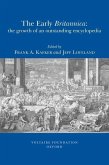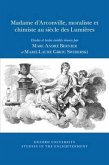Historians of eighteenth-century thought have implied a clear distinction between mystical or occult writing, often termed 'illuminist', and better-known forms of Enlightenment thinking and culture. But where are the boundaries of 'enlightened' human understanding? This is the question posed by contributors to this volume, who put forward a completely new way of configuring these seemingly antithetical currents of thought, and identify a grey area that binds the two, a 'Super-Enlightenment'. Through articles exploring the social, religious, artistic, political and scientific dimensions of the Super-Enlightenment, contributors demonstrate the co-existence of apparent opposites: the enlightened and the esoteric, empiricism and imagination, history and myth, the secretive and the public, mysticism and science. The Enlightenment can no longer be seen as a sturdy, homogeneous movement defined by certain core beliefs, but one which oscillates between opposing poles in its social practices, historiography and even its epistemology: between daring to know, and daring to know too much.








